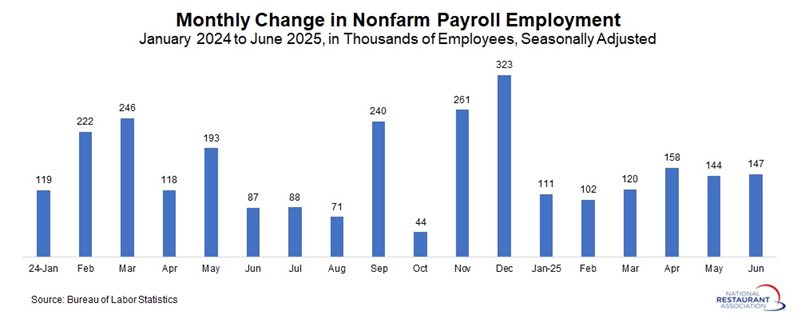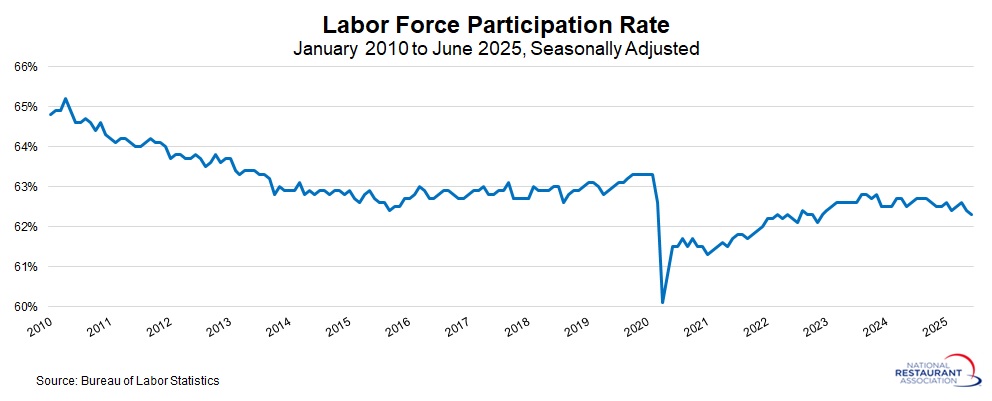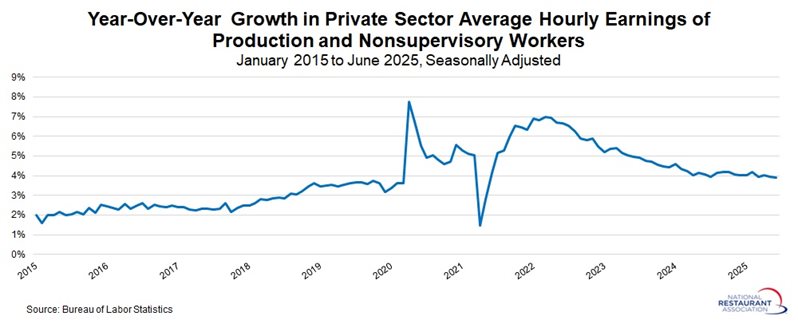The U.S. economy
added 147,000 nonfarm payroll jobs in June, slightly higher than the revised 144,000 in May and exceeding the consensus estimate of 110,000. The data were buoyed by stronger growth in state and local government employment than expected. Revisions to April and May raised prior estimates by 16,000. Over the past five months, job gains have averaged 130,000 per month—signaling a cooler, but still solid, labor market in the first half of 2025. June also marked the 54th consecutive month of employment growth.
Total nonfarm employment now stands at a record 159.72 million, surpassing the pre-pandemic peak from February 2020 by 7.43 million jobs—a 4.9% increase over that time.
While economic uncertainty continues to weigh on sentiment and business activity, pockets of resilience remain—though there are also emerging signs of softening.
Consumers are more likely to spend when supported by steady employment and wage growth, and the labor market’s continued strength may offer some reassurance to restaurant operators aiming to boost traffic and sales. Even so, labor market trends will be closely monitored in the months ahead for indications of how conditions are evolving amid shifting policy dynamics.

The unemployment rate edged down to 4.1% in June, after holding steady at 4.2% for the previous three months—remaining low by historical standards. The number of unemployed individuals declined from 7.24 million—the highest since October 2021—to 7.02 million. At the same time, the number of employed individuals rose modestly from 163.27 million to 163.37 million, remaining just below April’s record high of 163.94 million.

However, the labor force participation rate dipped from 62.4% to 62.3%, the lowest since December 2022. This suggests that more prospective workers have stepped away from the labor force in recent months, contributing to the decline in the unemployment rate.

Average hourly earnings for private-sector production and nonsupervisory workers rose 0.3% in June for the third consecutive month. Wages increased 3.9% year-over-year—a solid pace of growth. Even so, labor cost pressures have moderated significantly from the recent peak of 7.0% in March 2022.

Job growth in June was mixed across sectors. Notable gains occurred in private education and health services, state and local government, leisure and hospitality (including eating and drinking places), and construction. In contrast, employment declined in the federal government, manufacturing, mining and logging, and professional and business services. The private sector added 74,000 jobs, while government employment dipped rose by 73,000. Below is a detailed breakdown of June’s employment changes by sector, ranked from highest to lowest:
- Private education and health services: +51,000
- State government: +47,000
- Local government: +33,000
- Leisure and hospitality: +20,000 (eating and drinking places: +6,500)
- Construction: +15,000
- Financial activities: +3,000
- Information: +3,000
- Trade, transportation, and utilities: +3,000 (retail trade: +2,400)
- Mining and logging: -2,000
- Other services: -5,000
- Federal government: -7,000
- Manufacturing: -7,000
- Professional and business services: -7,000



